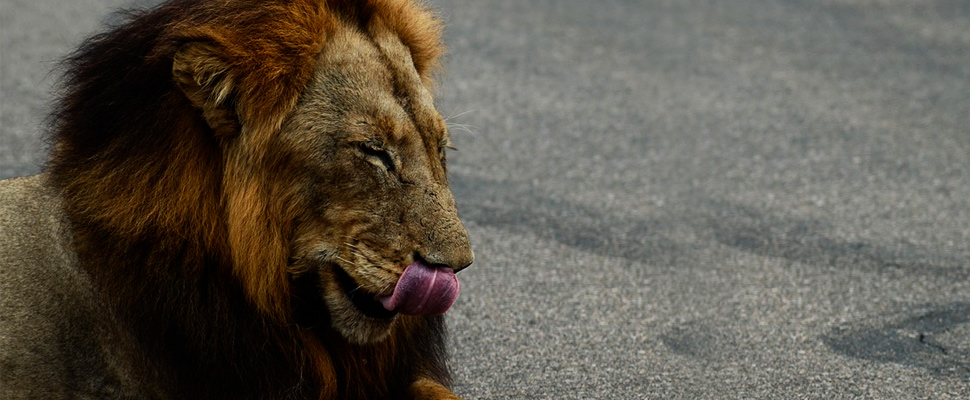The lion that agonizes while Colombia tries to save him
Jupiter agonizes and if it had not been for his own caretaker who traveled more than 750 kilometers, he would have died alone, abandoned and in the most precarious conditions.

The lion ‘Jupiter’ has gone through the last years for a case of extreme abandonment. / Photo: Pixabay
LatinAmerican Post | Alberto Castaño
Listen to this article
Leer en español: El león que agoniza mientras Colombia intenta salvarlo
Social networks spread tragic videos and photographs of Jupiter, a lion famous in Colombia for several years for the love he showed for his caregiver, Ana Julia Torres, and the passionate kisses they made public in photos and videos. Jupiter agonizes and if it had not been for his own caretaker who traveled more than 750 kilometers, to make sure the state of the animal, he would have died alone, abandoned to his fate and in the most precarious conditions.
Jupiter arrived at the hands of Ana Julia Torres being a puppy, because her mother, a lioness rescued from a traveling circus in the city of Cali, died during childbirth. Since then, the lion lived under his care in the Villa Lorena Wildlife Refuge for 19 years. But not everything was kisses, hugs, and caresses in the love story between Ana Julia and Jupiter, it was a freehand relationship to stay united because for years some people wanted to separate them.
The environmental authority in the city of Cali, the Administrative Department of Environmental Management, DAGMA, in 2017 issued a resolution ordering the application of euthanasia to two turtles, a spider monkey, a puma, a lion and two tigers, this resolution was signed by Luis Alfonso Rodríguez, at that time director of the DAGMA. Thanks to the more than 35 thousand signatures that were collected in a Change.org petition and the intervention of the then Interior Vice Minister, Luis Ernesto Gómez, it was possible to avoid the sacrifice of these animals among which was the famous Jupiter and the history of love with Ana Julia took its course.
Some animals, those that were in acceptable conditions to return to wildlife, did so, others, such as exotic tigers and lions and even some mutilated, like one of the pumas, remained in this site that provided care and protection to Hundreds of animals victims of multiple forms of violence, from illegal trade, through circuses and even having been pets of drug traffickers in the region.
However, DAGMA was determined to take the animals away from the Villa Lorena Refuge and in 2017, claiming that the animals were in poor conditions, they took two pumas that their caretakers knew as Luis and Santiago.
On that occasion, DAGMA's director said: "What we are going to do is a rescue, where 70% of the animals will be released in habitats according to their characteristics because they are not to be confined; the remaining 30% will pass to other shelters such as zoos or sites that meet all the requirements."
Paradoxically, this environmental authority confiscated the animals for being in supposedly bad conditions and a few days later they were killed as a result of an apparent accident in their own facilities. The pumas were electrocuted while they were locked in dog cages.
Despite the death of the two pumas in the hands of the environmental authority, who had confiscated them with the argument of providing them with better conditions, this entity continued to insist on its claims to move the animals and prevent this shelter from continuing to take care of them. Despite the more than 25 years of existence of operation and that repeatedly it is the same DAGMA who carries some animals to be housed in its facilities.
The day came when Ana Julia and Jupiter would have to separate, the DAGMA finally decided to move the great African lion to a zoo of spectacled caimans (Crocodilus fuscus) located more than 750 kilometers away from its caretaker.
The Zoo “Los Caimanes”, owned by Héctor Rodrigo Raigosa Villegas, located on the “Los Ciruelos” property of the Hacienda Paula Andrea, in the jurisdiction of the village of Villa Fátima, in the municipality of Buenavista – Córdoba, was the place where the CVS, environmental authority in that region of Colombia, arranged that Jupiter should be housed to ensure the well-being that DAGMA said it was looking for, as its director said, "shelters such as zoos or sites meet all requirements."
This zoo was promoted as a tourist site in which visitors could observe different species of animals, while it was a legally constituted and functioning company for the breeding of caimans, their subsequent sacrifice so they can use and export their skin.
But about six months ago, this company went bankrupt, closed its doors to the public and ended its breeding activities of the species (crocodilus fuscus). Sources of the environmental entity in Córdoba, who asked to keep their identity off the record, told LatinAmerican Post that "we failed because Los Caimanes notified us that they were closing activities and we did not go to review how the animals were."
Read also: Eco-friendly biodiesel from palm oil?
Meanwhile, Jupiter, neglected to his fate, deteriorated for months without the minimum attention he did receive at the Villa Lorena Refuge. Ana Julia had a very intimate feeling that drove her to visit her old love. “I left everything and came to visit him, I came to see that happy reunion and that hug and I find this dispossession, an animal that weighed almost 300 Kg is weighing 90,” said Ana Julia in an interview with W Radio Colombia.
DAGMA, the environmental authority in Cali has changed director and apparently the new administration has had an interest in the welfare of the hairy feline, this was evidenced when he sent Dr. Delio Orjuela to meet the needs of Jupiter to save his life. Orjuela is the veterinarian who has treated the lion for 19 years and today works for DAGMA. Thanks to the management of the Regional Autonomous Corporation of Valle del Cauca, the CVC and the agreement signed with the Colombian Air Force, Jupiter's transfer from Córdoba to the city of Cali could be guaranteed again where deeper studies have been carried out that seek to determine the existence of a possible cancer.
“The tests that have been done show us that the animal has a hemolytic anemia, it's very low hemoglobin, it's very low hematocrit, an infectious inflammatory process, hepatic and renal involvement, the animal is in multi-systemic failure, it is an animal of 20 years, that is not old, but neither is young, ”said Orjuela in exclusive statements for LatinAmerican Post.
With the transfer of Jupiter to Cali, with the help of the Colombian Air Force and the CVC and of course in the hands of his lifelong veterinarian, at least the due attention is guaranteed for this feline that, like many animals, has had to suffer the inclemency of captivity thanks to human vanity.




